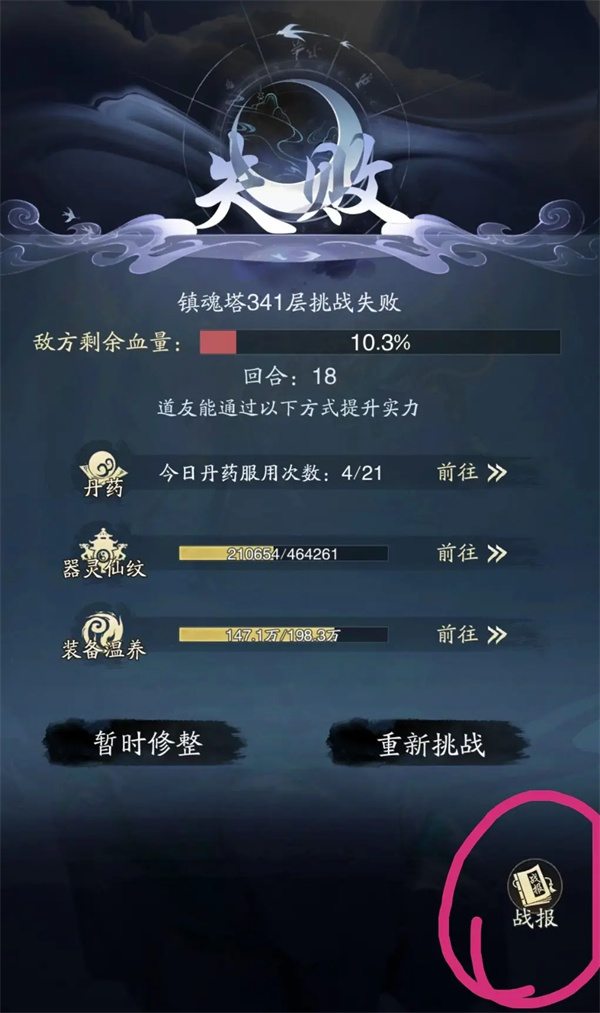NASA's Voyager is in hostile territory. It's 'dodging bullets.'
NASA's Voyager craft have 关键字2ventured where no other human machines have ever gone — the space between the stars. But that comes with a cost.
At some 15 and 12 billion miles away, Voyager 1 and 2 are beyond the protective bubble of the sun, called the heliosphere. Out in this realm of interstellar space, the nearly 50-year-old probes have a higher probability of damage from hostile, high-speed particles, called galactic cosmic rays, owing to a higher number of particles zooming by every second.
"We are dodging bullets out there," Alan Cummings, a cosmic-ray physicist at Caltech — the research university that manages NASA's Jet Propulsion Laboratory — told Mashable. Cummings began working on the Voyager mission 51 years ago.
You May Also Like
SEE ALSO: NASA spacecraft keeps on going faster and faster and faster
But direct hits are inevitable. In 2010, while on the edge of our solar system's heliosphere, Voyager 2 unexpectedly began sending gibberish back to Earth. Cummings suspects that a passing galactic cosmic ray tripped part of a computer's memory — though NASA was eventually able to rectify the problem. Most recently, Voyager 1 failed to send back readable data for five months, a particularly worrying incident that may also have been triggered by a cosmic ray. Something corrupted a computer chip.
"We don't know everything," Cummings explained, referencing the difficulty in perfectly diagnosing such profoundly distant mishaps. "But I do think galactic cosmic rays are the guilty party here for most of these problems."
"We are dodging bullets out there."
Galactic cosmic rays are merciless because they're extremely tiny, charged particles, traveling at incredible speeds — nearly the speed of light. "The galaxy is permeated with galactic cosmic rays," Cummings marveled. Astronomers think violently exploding stars — supernovae — are responsible for creating many of these particles, as the colossal shock wave from the event accelerates the particles. Stripped of their outer shells, they hurtle through space as just the nuclei of atoms.
The heavier ones, like iron atoms transformed into galactic cosmic rays, can cause more damage than the lighter, more abundant ones. (It's somewhat like getting hit by a bowling ball at 50 mph, versus a golf ball.) They can zip right through a computer chip — altering its code — or even become lodged there, where they can pack an even bigger punch by doing permanent damage.
 A graphic showing Voyager 1 and 2 having traveled beyond the sun's partially protective heliosphere, and into interstellar space. Credit: NASA / JPL-Caltech
A graphic showing Voyager 1 and 2 having traveled beyond the sun's partially protective heliosphere, and into interstellar space. Credit: NASA / JPL-Caltech  Engineers installing a golden record — containing music, sounds, and imagery from Earth — to the side of Voyager 1. Credit: NASA / JPL-Caltech
Engineers installing a golden record — containing music, sounds, and imagery from Earth — to the side of Voyager 1. Credit: NASA / JPL-Caltech Of course, NASA spacecraft like the Voyagers are equipped with radiation-resistant parts and shielding, including wrapping around critical cables. These layers can keep out some particles — but not all. "You can protect yourself to some extent, but a high-enough-energy particle will get through your defenses," Cummings explained. Early in the Voyager mission, the space agency's engineers were worried about the craft passing by Jupiter, a planet that produces intense radiation. A person hypothetically riding aboard Voyager would have gotten hit with a radiation dose 1,000 times the lethal level. "That was pretty hostile," Cummings recalled. He said a few detectors on his galactic-ray measuring instrument (the Cosmic Ray Subsystem)were wounded, but overall, both the instrument and entire spacecraft survived to produce new scientific results, including vibrant, unprecedented imagery.
Yet out in the deeper cosmos, the Voyagers face a different threat. Around the gas giant Jupiter, the craft were sprayed with charged particles, but they were lower energy. Now in interstellar space, the craft are more often exposed to those high-energy particles. Any place in space — whether in our solar system or beyond — can meet the threat of a harmful galactic cosmic ray. But the odds are boosted in the interstellar realm.
"Explorers run into problems when they enter into new territory."
When might another such hit come? "It's just a random chance out there right now," Cummings said.
Related Stories
- The U.S. is exploring a railroad for the moon. It has a good reason.
- Alien planets might teem with purple — yes, purple — life
- The best telescopes for gazing at stars and solar eclipses in 2024
- NASA shows how Mars helicopter did the impossible, and then crashed
- If a scary asteroid will actually strike Earth, here's how you'll know
 The Voyager team celebrates after restoring some communication to Voyager 1 on April 20, 2024. Credit: NASA / JPL-Caltech
The Voyager team celebrates after restoring some communication to Voyager 1 on April 20, 2024. Credit: NASA / JPL-Caltech Billions of miles away, on Earth, in sunny Pasadena, California, however, the craft have a guardian. Or, a legion of guardians. NASA engineers have for decades devised ways to keep the aging, radiation-pummeled craft alive. They communicate with vintage computers aboard the nearly half-century old probes. Talking to an interstellar craft isn't like sending a text: It takes almost two days to transmit and then receive a message. Most recently, in April, NASA engineers squared off with a permanently-damaged computer chip on Voyager 1. By beaming messages to the craft, over 15 billion miles away, they successfully stored the defunct chip's unique code in other chips, as "no single location is large enough to hold the section of code in its entirety," the agency explained. The craft is once again communicating about its health, but not yet returning science data.
"You have to praise the engineers," Cummings emphasized.
They've certainly been busy. And in hostile space, with high-speed particles ceaselessly whizzing by, they'll likely continue to be. The craft are running low on nuclear fuel, but could — if undamaged — beam back unprecedented readings from uncharted space through the mid-2030s.
"Explorers run into problems when they enter into new territory,"Cummings said. "Lewis and Clark didn't have an easy time, either."
(责任编辑:神墓)
 Brennan Lee Mulligan on 'Dimension 20: Cloudward, Ho!' and bringing steampunk to the dome
Brennan Lee Mulligan on 'Dimension 20: Cloudward, Ho!' and bringing steampunk to the dome NASA is back in the moon business. Here's what the Artemis mission means.
NASA is back in the moon business. Here's what the Artemis mission means.Most Anticipated PC Games of 2025
Gác chuông cổ, nơi thành lập chi bộ Đảng đầu tiên của một huyện ở Thanh Hóa
 寒日里最适合给女人驱寒暖胃的饮品:姜枣茶
寒日里最适合给女人驱寒暖胃的饮品:姜枣茶
- 因学业不顺食堂行凶!武汉公安:伤者无生命危险 嫌疑人被当场控制
- 疯狂改造!显卡华丽变身PC整机:竟真的跑起来了
- Which iPad Model Should You Get?
- 玩家发掘《艾尔登:黑夜君临》超珍稀道具线头用途 掉率感人
- Xổ số miền Nam 9.6: Trà Vinh có người trúng độc đắc 28 tỉ, TP.HCM cũng đổi thưởng 'khủng'
- Are Passwords Dead? What Are Passkeys, and Why Everyone's Talking About Them
- 四年级状物作文:我家兔子真可爱
- 吃20斤橘险丧命竟是因为不吐籽 什么水果籽不能吃
-
终于!超五百万孩子被选召,《数码宝贝:源码》预约火热进行中!
 对于许多90后、00后而言,《数码宝贝》不仅是一场关于友情、成长、勇气的冒险故事,更是成长路上的珍贵记忆。近日,由东映动画正版授权,万代南梦宫(上海)娱乐有限公司与恺英网络联手打造的次世代数码宝贝IP
...[详细]
对于许多90后、00后而言,《数码宝贝》不仅是一场关于友情、成长、勇气的冒险故事,更是成长路上的珍贵记忆。近日,由东映动画正版授权,万代南梦宫(上海)娱乐有限公司与恺英网络联手打造的次世代数码宝贝IP
...[详细]
-
“มันเป็นโศกนาฏกรรมที่เลวร้าย” ปริศนาเรืออัปปางเมื่อ 140 ปีก่อนได้รับการไขแล้ว
 "มันเป็นโศกนาฏกรรมที่เลวร้าย" ปริศนาเรืออัปปางเมื่อ 140 ปีก่อนได้รับการไขแล้ว
...[详细]
"มันเป็นโศกนาฏกรรมที่เลวร้าย" ปริศนาเรืออัปปางเมื่อ 140 ปีก่อนได้รับการไขแล้ว
...[详细]
-
 《生化危机》舅舅Dusk Golem发推称,《生化危机9:安魂曲》几天后就有新的消息发布,而且是官方消息。所以希望进一步了解《生化危机9》的玩家也不用等太久了。在夏季游戏节发布会上,Capcom以压箱
...[详细]
《生化危机》舅舅Dusk Golem发推称,《生化危机9:安魂曲》几天后就有新的消息发布,而且是官方消息。所以希望进一步了解《生化危机9》的玩家也不用等太久了。在夏季游戏节发布会上,Capcom以压箱
...[详细]
-
 在支付宝蚂蚁庄园小程序中每日都会有问题来考大家,回答正确之后就可以领取食料来喂养小鸡了,那么9月21日问题的答案会是什么呢?下面就和小编来看一下吧。问题:未成熟的猕猴桃怎么存放能更快成熟?选项:A、放
...[详细]
在支付宝蚂蚁庄园小程序中每日都会有问题来考大家,回答正确之后就可以领取食料来喂养小鸡了,那么9月21日问题的答案会是什么呢?下面就和小编来看一下吧。问题:未成熟的猕猴桃怎么存放能更快成熟?选项:A、放
...[详细]
-
 在踏风行手游中玩家需要合理搭配神通与器灵才能更大程度的提高战力,许多玩家不知道神通器灵组合搭配的逻辑和原理是什么,下面就为大家带来踏风行中神通与器灵组合搭配的教程分享吗一起来看看吧!踏风行神通器灵搭配
...[详细]
在踏风行手游中玩家需要合理搭配神通与器灵才能更大程度的提高战力,许多玩家不知道神通器灵组合搭配的逻辑和原理是什么,下面就为大家带来踏风行中神通与器灵组合搭配的教程分享吗一起来看看吧!踏风行神通器灵搭配
...[详细]
-
 【独家签约小说:超神:每天一个概念级,震惊凯莎】楚风穿越超神世界,落入梅洛天庭,。开局遇到天使彦,并且获得概念能力系统。【恭喜,你获得能力:通读,任何知识都能迅速学会】【恭喜,你获得能力:十秒真男人,
...[详细]
【独家签约小说:超神:每天一个概念级,震惊凯莎】楚风穿越超神世界,落入梅洛天庭,。开局遇到天使彦,并且获得概念能力系统。【恭喜,你获得能力:通读,任何知识都能迅速学会】【恭喜,你获得能力:十秒真男人,
...[详细]
-
谁离鸟巢更近一步?2022“鸟巢之路”+“全明星”积分榜最新出炉!
 2022全明星鸟巢之路首站积分榜最新出炉!鸟巢之路*以上积分为2021鸟巢之路+2022全明星鸟巢之路首站积分之和。全明星战队*以上积分为2022全明星系列赛首站【战队所有成员个人赛+90CM团体赛】
...[详细]
2022全明星鸟巢之路首站积分榜最新出炉!鸟巢之路*以上积分为2021鸟巢之路+2022全明星鸟巢之路首站积分之和。全明星战队*以上积分为2022全明星系列赛首站【战队所有成员个人赛+90CM团体赛】
...[详细]
-
 今年劳动节,爸爸给我买了一只可爱的小白兔.'它有一双红宝石一样的小眼睛,还有两只长长的耳朵(我家的兔子不知怎么了,右耳朵挂了下来),它那短短的小尾巴最惹人喜爱.它走起路来小屁股一扭一扭的,可它
...[详细]
今年劳动节,爸爸给我买了一只可爱的小白兔.'它有一双红宝石一样的小眼睛,还有两只长长的耳朵(我家的兔子不知怎么了,右耳朵挂了下来),它那短短的小尾巴最惹人喜爱.它走起路来小屁股一扭一扭的,可它
...[详细]
-
HBL PSL reaches historic landmark in Lahore
 The Pakistan Super League (PSL) marked a significant milestone this week as it celebrated its 300th
...[详细]
The Pakistan Super League (PSL) marked a significant milestone this week as it celebrated its 300th
...[详细]
-
 副标题:传奇SF道士职业攻略:如何成为辅助与消耗战术的大师道士职业深度解析:如何在中变传奇SF中玩转辅助与消耗战术在传奇SF这款深受玩家喜爱的游戏中,道士职业往往被视作一个独特的存在。与战士的冲锋陷阵
...[详细]
副标题:传奇SF道士职业攻略:如何成为辅助与消耗战术的大师道士职业深度解析:如何在中变传奇SF中玩转辅助与消耗战术在传奇SF这款深受玩家喜爱的游戏中,道士职业往往被视作一个独特的存在。与战士的冲锋陷阵
...[详细]


